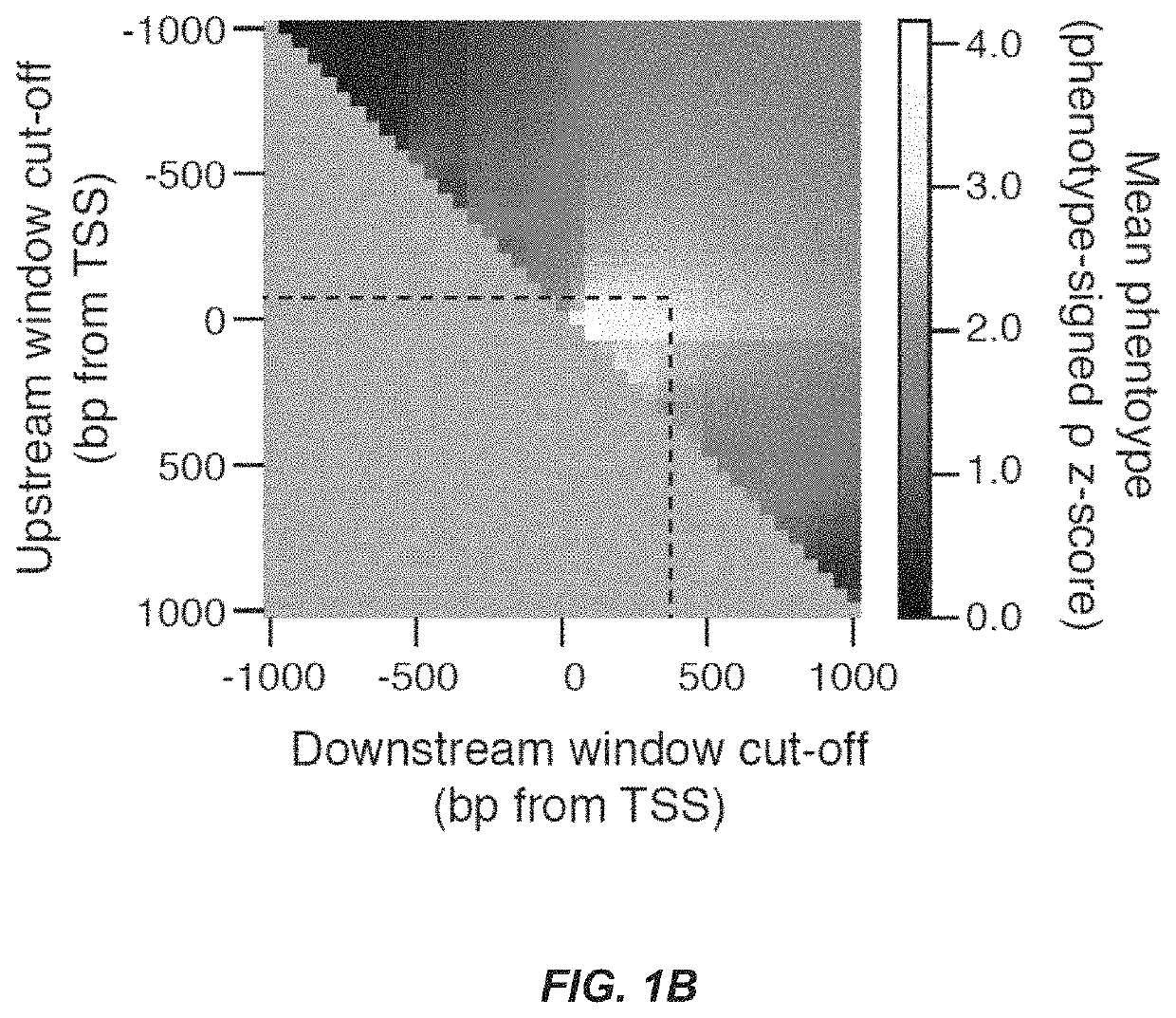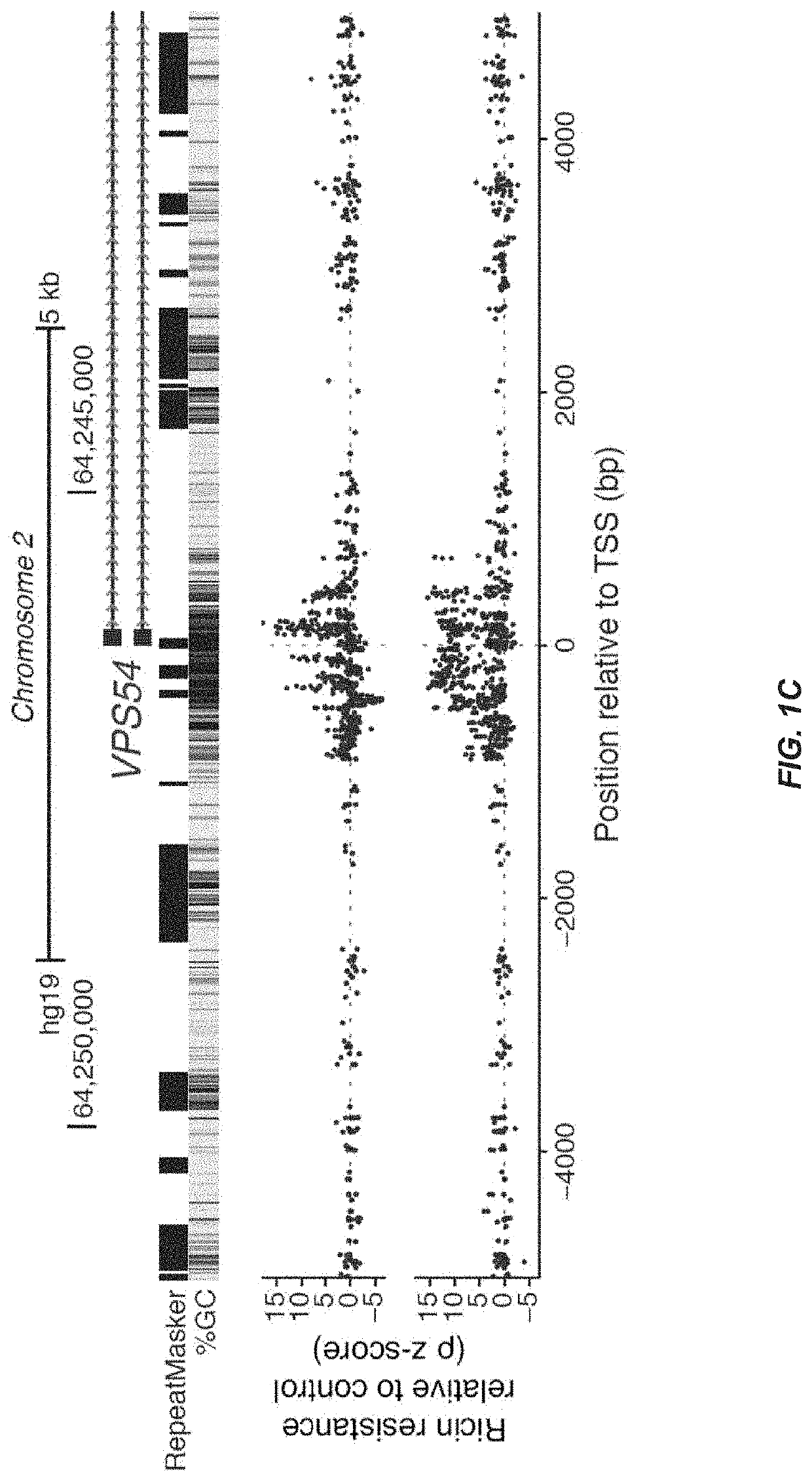CRISPR/Cas transcriptional modulation
a transcriptional modulation and transcriptional technology, applied in the field of transcriptional modulation of cas, can solve the problems that the methods and compositions known in the art often fail to provide the activity and specificity necessary for routine use, and achieve the effect of increasing stability or activity
- Summary
- Abstract
- Description
- Claims
- Application Information
AI Technical Summary
Benefits of technology
Problems solved by technology
Method used
Image
Examples
example 1
gRNAs
[0164]A BlpI site was introduced into the 5′ hairpin region of an sgRNA scaffold. A library of sgRNA binding regions was synthesized using solid phase synthesis techniques. The binding regions have a 3′ end that can be ligated to a cut BlpI site. The sgRNA scaffold was cut with BlpI and purified. Synthesized binding regions were recovered and ligated to the cut sgRNA scaffold to produce a library of sgRNAs.
example 2
CRISPRi System
[0165]An inducible CRISPRi system was constructed that enables dynamic control of gene expression. This optimized set of fusion proteins positions a transcriptional repressor effector domain (KRAB) to the N-terminus using an optimized linker domain and removes the fluorescent tag from dCas9 via a self-cleaving peptide. The optimized CRISPRi system shows a 4-15 fold improved activity on a GFP reporter. The CRISPRi system involves delivery of 3 genes or gene products (e.g., an optimized sgRNA, a tet-transactivator, and a tet inducible dCas9-repressor construct).
example 3
System for Multimerization of Effector Domains at DNA with CRISPR
[0166]An inducible Cas9 system for controllable multimerization of effector domains at DNA is constructed. This system involves the delivery of 4 genes or gene products (e.g., an optimized sgRNA, a tet-transactivator, and the tet inducible dCas9-GCN4 epitope fusion protein, and a recombinant single chain variable chain fragment antibody which binds to the GCN4 epitope fused to sfGFP and VP64 (scFVVP64)).
[0167]Activation can be tuned to a desired level by varying the number of GCN4 epitopes in the dCas9-GCN4 fusion protein. Fusion proteins with 6, 10 or 24 epitope copies (antibody binding sites) are constructed. The ratio of dCas9 protein to scFVVP64 can also be tuned, e.g., by appropriate promoter and inducer selection. The concentration of antibody and effector protein should typically exceed the concentration of the dCas9 fusion protein by the number of epitope binding sites on the dCas9 fusion. For example a constru...
PUM
| Property | Measurement | Unit |
|---|---|---|
| concentration | aaaaa | aaaaa |
| pH | aaaaa | aaaaa |
| frequency | aaaaa | aaaaa |
Abstract
Description
Claims
Application Information
 Login to View More
Login to View More - R&D
- Intellectual Property
- Life Sciences
- Materials
- Tech Scout
- Unparalleled Data Quality
- Higher Quality Content
- 60% Fewer Hallucinations
Browse by: Latest US Patents, China's latest patents, Technical Efficacy Thesaurus, Application Domain, Technology Topic, Popular Technical Reports.
© 2025 PatSnap. All rights reserved.Legal|Privacy policy|Modern Slavery Act Transparency Statement|Sitemap|About US| Contact US: help@patsnap.com



